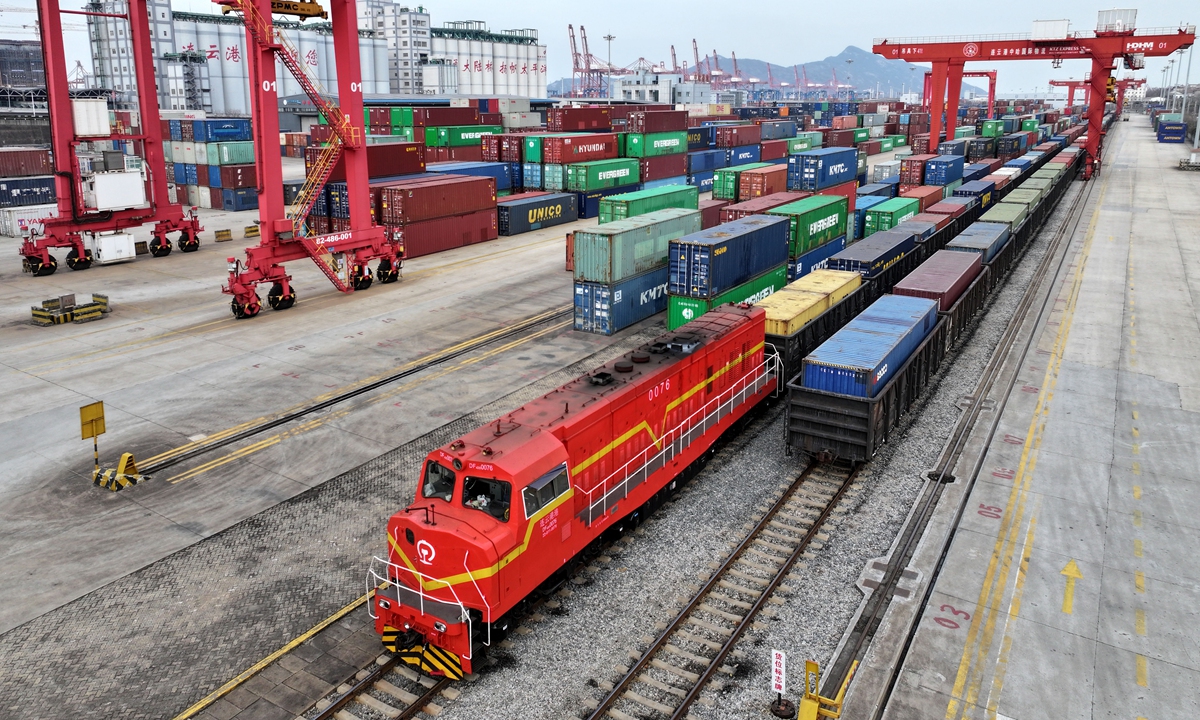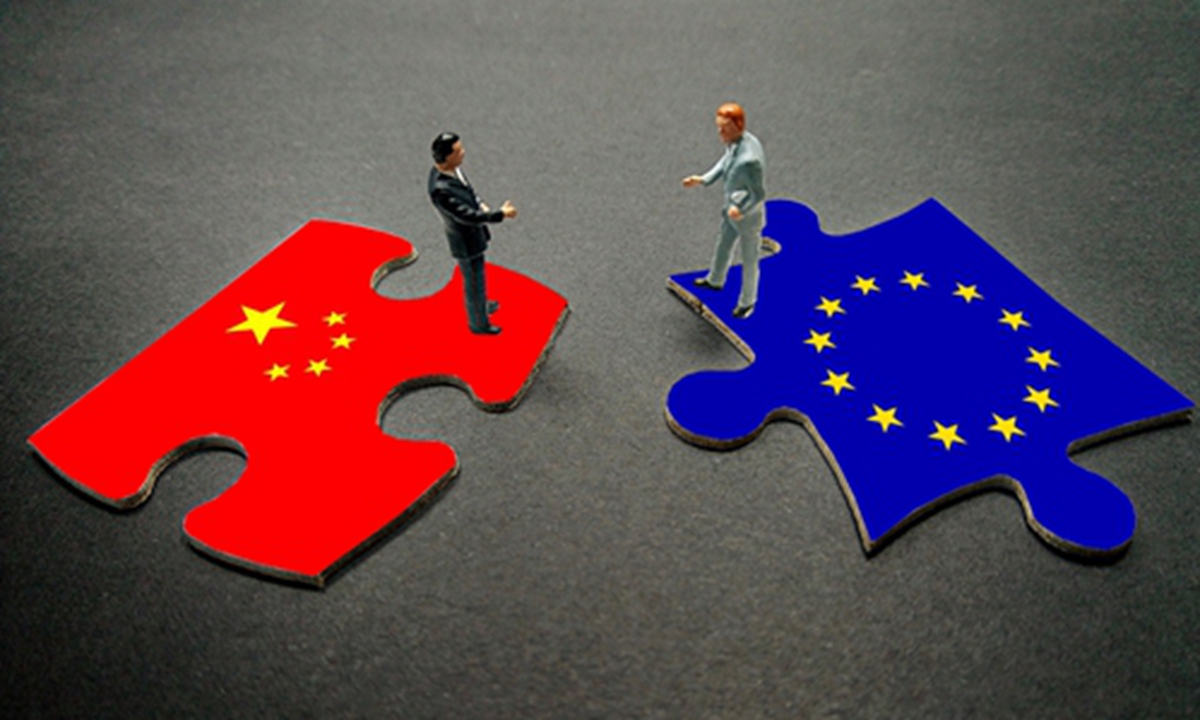EU-China trade continues growing trend in Jan-Apr 2025: GAC
A high complementarity highlighted by shared common interest: expert

A China-Europe freight train loaded with containers departs from Lianyungang, East China's Jiangsu Province, on February 6, 2025. The Lianyungang China-Europe (Asia) freight train express has seen a strong start to the new year, with 93 trains operated and 7,608 standard containers of goods transported in January, up 24.4 percent year-on-year. Photo: VCG
China's trade with the EU continues its growing trend, latest official data showed, signaling a renewed strength and resilience against the backdrop of global uncertainties.
The EU was China's second-largest partner, with the trade value topping 1.78 trillion yuan ($246.4 billion) in the first four months of this year, according to data released by the General Administration of Customs (GAC) on Friday.
GAC said the value recorded a year-on-year increase of 1.1 percent and constituted 12.6 percent of the total foreign trade with China, following ASEAN, which accounted for 16.8 percent of the total trade map.
Trade between China and the EU in the first four months of this year continues its growth, as earlier GAC data showed that China-EU imports and exports hit 1.3 trillion yuan in the first quarter of this year, up 1.4 percent year-on-year.
"The latest data from Chinese Customs highlights a high complementarity between China and the EU, especially amid today's challenging global trade landscape," Zhao Junjie, a senior research fellow at the Institute of European Studies at the Chinese Academy of Social Sciences, told the Global Times on Friday.
He noted that the trade landscape between China and Europe is deeply integrated through shared common interests. Although there are some politicians advocating so-called decoupling, businessmen still prefer to vote with their feet, he added.
The data came amid the backdrop of the Chinese side and the European Parliament deciding to simultaneously and fully lift restrictions on exchanges between the two sides.
During a press conference held by the Chinese Foreign Ministry on Tuesday, spokesperson Lin Jian said that for publicly known reasons, the exchange between Chinese and EU legislatures has encountered some setbacks over the past few years. Currently, the two sides have recognized the importance of enhancing dialogue and cooperation.
As agreed between the two sides, the Chinese side and the European Parliament decided to fully lift reciprocal exchange restrictions simultaneously. We believe and hope that as China and the EU fully resume exchanges between the legislatures, there will be deeper exchanges and understanding, and this will provide a new driving force for the sustained, sound and steady growth of China-EU relations, Lin said.
For many European multinationals, these trends are driving long-term investments and greater innovation commitments in China.
Oliver Zipse, chairman of the Board of Management of BMW AG, said in a speech sent to the Global Times in April that BMW's R&D network in China is the largest outside of Germany.
Highlighting China's growing role in innovation, particularly in AI, Zipse said they are strengthening AI partnerships for integration into their vehicles in China.
Ola Kaellenius, chairman of the board of management of Mercedes-Benz, also said in a speech shared with the Global Times in April that the company has massively expanded its local footprint.
We develop our products locally in China, for China, and increasingly also in China for the world. One cornerstone of our global R&D network is located right here in Shanghai. We also manufacture more than 80 percent of our Mercedes-Benz Cars sold in China locally, and our biggest production plant worldwide is located in Beijing, he said.
The European Chamber conducted an online flash survey from April 17 to 27 to assess how its members have been affected by the recent escalation of tariffs and trade measures between the US and China.
When the companies were asked whether their export supplies or goods from China to the US were affected by the US tariff hikes, 69 percent said there was no impact.
On Thursday, Jens Eskelund, president of the European Union Chamber of Commerce in China, said in Beijing that China can turn a crisis into an opportunity and demonstrate that it is a stable and predictable investment destination.
Multinational companies from the EU still regard China as a crucial market, a stance that transcends partisan disputes. This further underscores the enduring appeal of the Chinese market to European businesses, Zhao added.
2025 marks the 50th anniversary of the establishment of diplomatic ties between China and the EU, Over the past 50 years, China-EU trade and investment have developed rapidly, with their scale and quality continuously improving.
Data from MOFCOM showed that bilateral goods trade has surged from $2.4 billion at the beginning to $785.8 billion in 2024. By the end of 2024, EU companies had invested more than $150 billion in China, and China's cumulative direct investment in Europe had reached nearly $110 billion.
China-EU investment cooperation has entered a "two-way fast lane" and has great potential in the future, Yan Dong, vice minister of commerce said at a press conference on Friday.
China is willing to properly handle economic and trade differences through dialogue and consultation, maintain the security and stability of the industrial chain and supply chain, expand cooperation in green and digital fields, and jointly safeguard multilateralism and free trade, Yan said.




